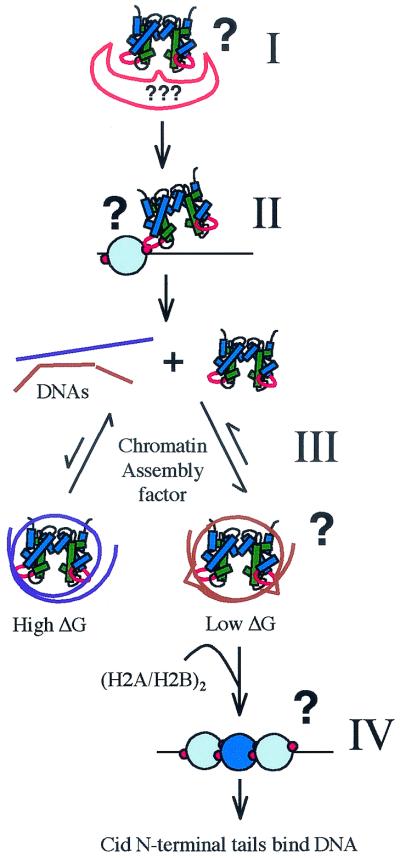FIG. 6.
Steps in the targeting process where LI may be involved. LI may be required for binding of the (Cid.H4)2 tetramer to a putative centromere-specific nucleosome assembly factor (step I). LI may mediate the interaction of unassembled (Cid.H4)2 tetramers with Cid chromatin at centromeres, guiding assembly of new Cid nucleosomes at the location of existing centromeres (step II). LI may be a discriminating factor in DNA specificity during the assembly of (Cid.H4)2 tetramers (step III). Assembly of (Cid.H4)2 tetramers is an equilibrium process, perhaps assisted by chromatin assembly or remodeling factors which would act to lower the activation energy for transfer of tetramers between different DNA sequences (brown and purple double helices). DNA sequences (brown) that have the lowest free energy in the complex are favored for reversible deposition of tetramers, and their assembly goes to completion. LI may act at the level of DNA specificity by dictating a deformation in the DNA (schematically shown as a kink in the DNA). The LI regions may be required to fit correctly in between existing Cid nucleosomes (step IV). Minor groove binding of the Cid N-terminal tails may complete assembly of new Cid nucleosomes and result in formation of unique higher order centromeric chromatin structure.

